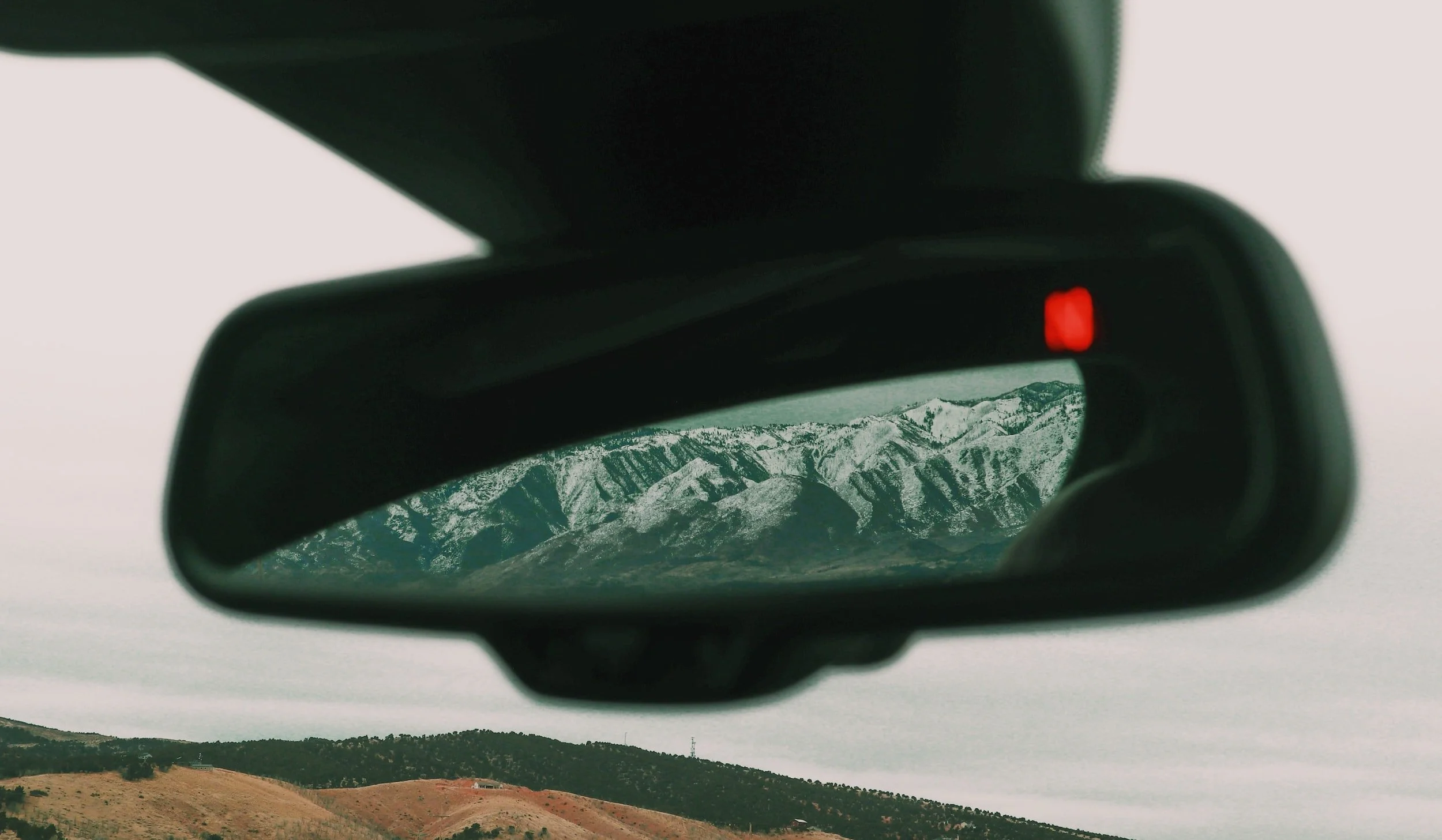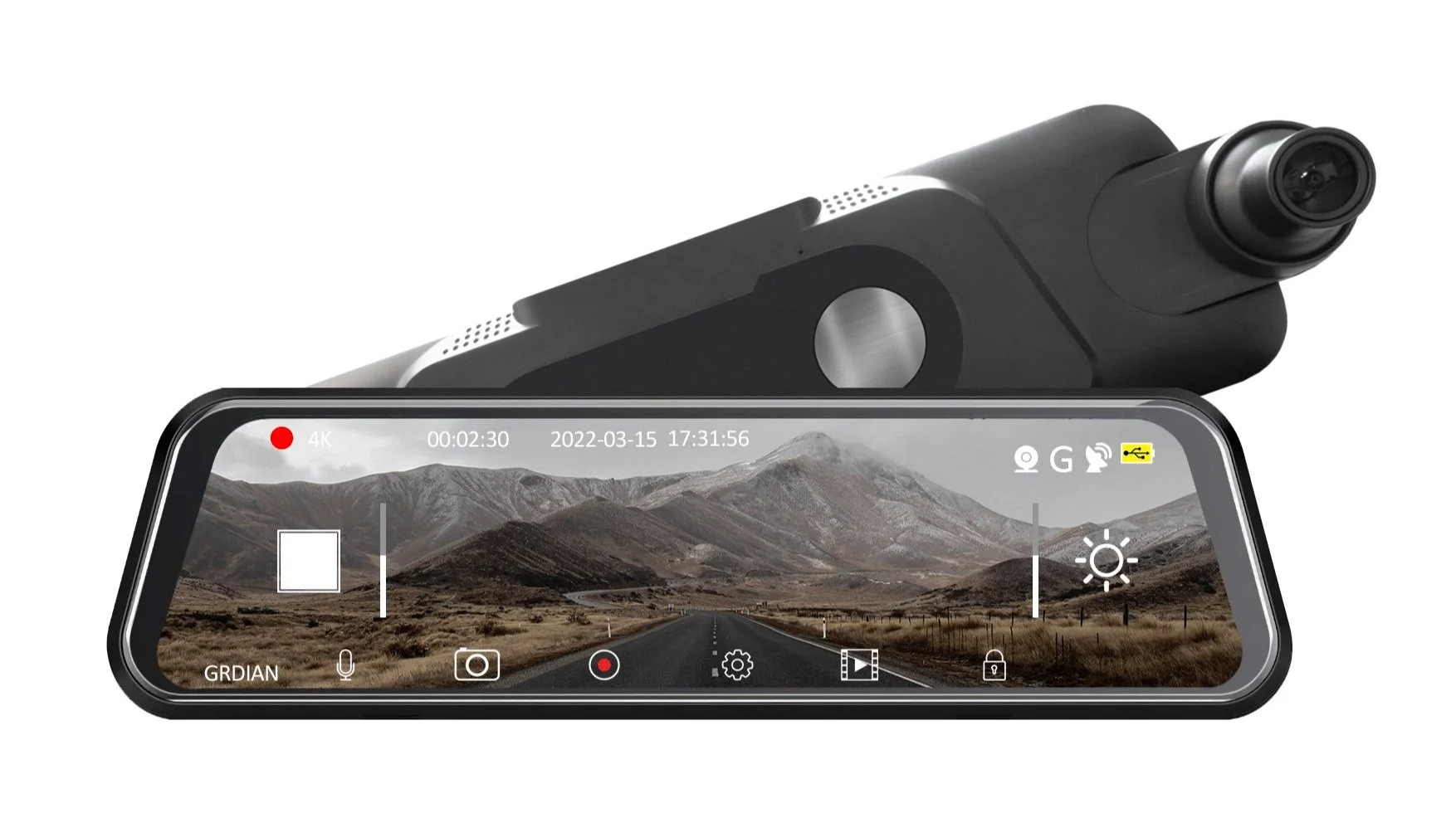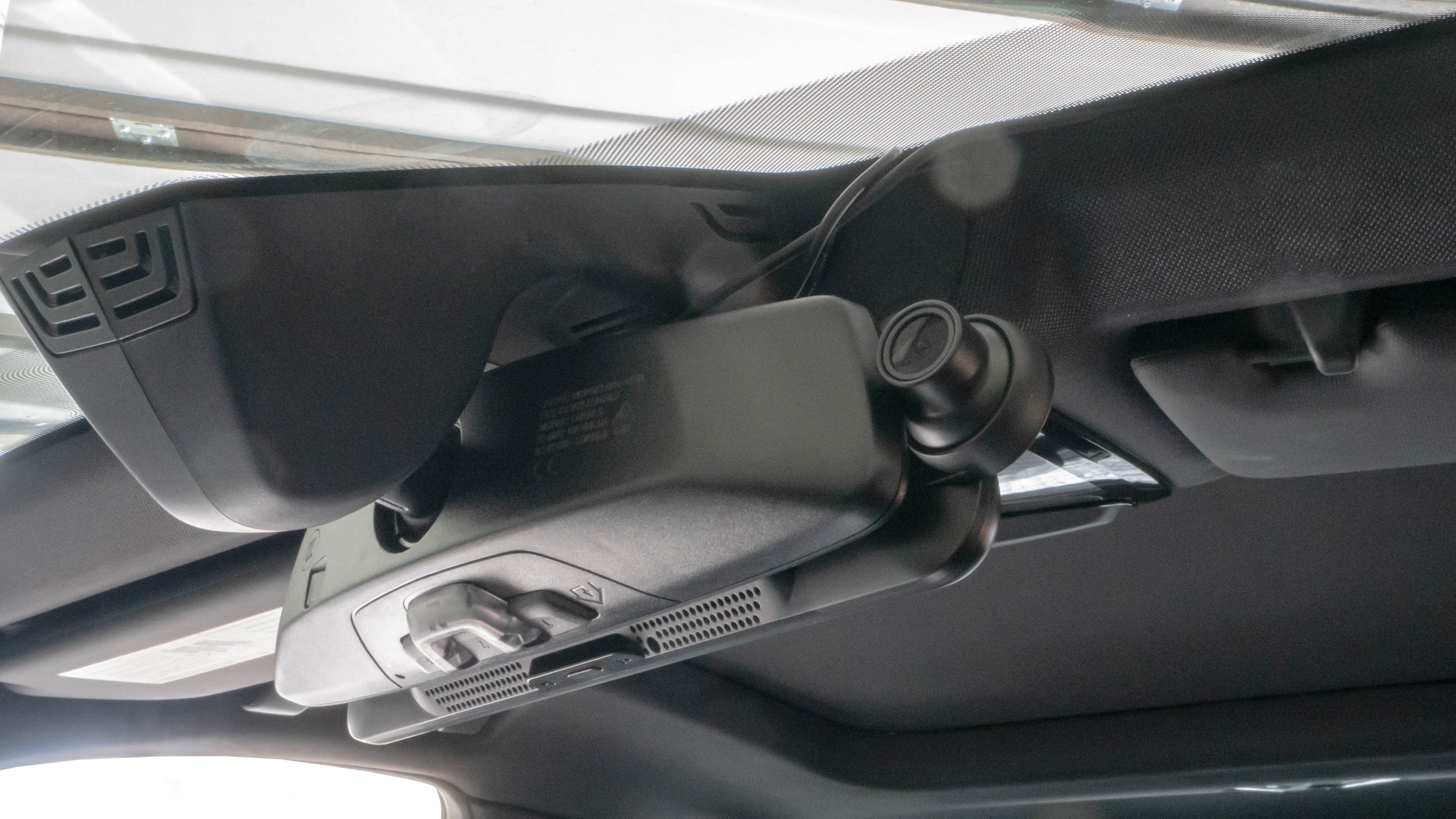Uncovering the Benefits of Rear View Mirror Cameras
Rear-view mirror cameras have become an increasingly popular alternative to the traditional front-facing dash cams that are traditionally mounted on your windshield. While many people are familiar with front-facing dash cams, rear-view mirror cameras provide additional benefits that can make them even more appealing. In this article, we'll uncover some of the various benefits rear-view mirror cameras provide and explore why they could be a great addition to any driver's vehicle.
What is a Rear-View Mirror Camera?
A rear-view mirror camera is a type of in-car camera system that attaches to your vehicle's existing rear-view mirror. It combines the functionality of a rear-view mirror with a dash cam (in-car camera system). It has become increasingly popular in recent years due to its ability to provide an extra layer of security and safety while on the road. It can help protect drivers and their passengers by providing a visual record of the road and any incidents that may occur, which can be used as evidence in the event of an accident, to contest a traffic violation, or for personal security.
Types Of Rear View Mirror Cameras
Rear-view mirror cameras come in a variety of shapes and sizes to fit every driver's needs. The most popular type features a single camera, which records only the front of the vehicle. It is typically attached to the car's rear-view mirror and records footage in just one direction. It is ideal for capturing events that take place in front of your vehicle, such as car accidents or hit-and-runs.
For drivers who want more coverage than a single-camera can offer, dual-channel cameras are available. These devices feature two cameras that record from both the front and back of the vehicle, providing a much wider field of vision while on the road. This makes them ideal for long trips or drives through unfamiliar areas since they can help drivers feel more secure while out on their journey.
Some Benefits of Using a Rear View Mirror Camera
When it comes to driving, there are few tools that provide as much peace of mind as a rear-view mirror camera. They offer numerous advantages that can help make any journey safer and easier for drivers. Here are some of the most notable benefits of using a rear-view mirror camera:
Improved Driving Visibility
A rear-view mirror camera can help a driver improve their rear visibility. Some systems allow for a rear camera to be installed either on the inside or outside of your vehicle. This can be especially helpful in improving visibility while reversing or backing up in low-light conditions.
Easy Installation
With most models, installation is quick and easy. Most rear-view mirror cameras have simple mounting systems that can be attached directly to the car's existing rear-view mirror without requiring additional modifications. Once set up, you can simply plug the system into a power source to start using it.
Dual Purpose
Not only does a rear-view mirror camera serve as a dash cam, but it also doubles as a rear-view mirror. This means that you can enjoy the added safety benefits of a dash cam without sacrificing your driving visibility or any additional clutter on your windshield.
More Discreet
Rear-view mirror cameras co-exist with your existing rear-view mirror, making it blend in with the car’s interior. This makes the system less noticeable and less likely to draw the attention of thieves.
Increased Awareness
Rear-view mirror cameras allow drivers to keep an eye on their surroundings at all times, even when they're not looking in the direction of the camera. This added awareness can help reduce the chances of getting into an accident or being caught off guard by another driver's unexpected actions.
More Evidence
More Evidence: In case of an accident or other issue, having footage taken from multiple angles can be incredibly helpful in settling disputes or providing proof of insurance claims. Video recordings provide clear evidence that can help resolve a situation quickly and easily.
Installation Process
Installing a rear-view mirror camera is surprisingly simple and straightforward. Most models come with all the necessary hardware included, allowing for a hassle-free installation process. Here's what you need to know about getting your camera up and running:
Most rear-view mirror cameras come with rubber straps that can be securely fastened to an existing rear-view mirror. Magnetic mounts like the ARC4K system uses, allow users to simply slide the system onto their existing rear-view mirror. The mounting bracket and strong magnet plate securely hold the system in place. An adjustable arm can then be extended and the camera lens adjusted for optimal recording angle. Once set up, you can simply plug the system into a power source to start using it.
Common Features
Because of its size, traditional dash cams are limited to some of the features a rear-view mirror camera can offer. With more space to incorporate additional hardware and features, rear-view mirror cameras offer more in terms of features and user experience. Some common features you might find include:
Touchscreen Capability - The touchscreen feature is an innovative addition to rear-view mirror cameras that provide users with a more intuitive and user-friendly experience. With this feature, drivers can easily access and navigate through the system's various functions, such as adjusting the camera angle, changing the recording mode, or reviewing footage. The touchscreen interface eliminates the need for physical buttons, making the system more streamlined and aesthetically pleasing. The touchscreen feature is a valuable upgrade to rear-view mirror cameras that enhances their usability and convenience for drivers.
GPS Logging - GPS logging is a powerful feature that can greatly enhance the functionality of a rear-view mirror camera. This feature uses GPS technology to track the location and speed of the vehicle, as well as other data such as the time and date.
High-Quality Video Recording - High-quality video recording is a crucial feature for rear-view mirror cameras, as it provides clear, detailed, and reliable footage for later review. Video resolution can typically range from 1080p to 4K. Advanced features such as Wide Dynamic Range (WDR) and High Dynamic Range (HDR), can help balance the lighting in the video, resulting in clearer and more accurate footage. This is particularly important for capturing details such as license plates, road signs, and other important information.
WiFi Capability - WiFi capability is a useful and convenient feature for rear view-mirror cameras that allow users to easily transfer and access their recorded footage. With this feature, the system can connect to a WiFi network, either through a built-in antenna or a hotspot on the user's phone, enabling the user to view and download footage directly to their smartphone or another device.
Dual-Channel (Front & Rear) - Dual-channel cameras allow for simultaneous recording from both the front and rear of the vehicle. This is particularly useful for drivers who want a comprehensive and accurate record of their travels on the road, as it provides a complete view of the vehicle's surroundings. The front-facing camera records footage of the road ahead, while the rear-facing camera captures footage of the vehicle's rear.
Parking Mode – Parking mode is an essential feature for rear-view mirror cameras, providing drivers with added protection and security when their vehicle is parked and unattended. This feature enables the system to continue recording footage even when the ignition is turned off, using motion detection or G-sensor technology to trigger recording when any movement or impact is detected near the vehicle. Parking mode is especially useful for drivers who park their vehicles in areas with high levels of traffic or limited visibility, as it can capture evidence of any incidents such as accidents, theft, or vandalism. Additionally, many parking mode rear-view mirror cameras include advanced features such as time-lapse recording or buffered parking mode, which ensure that important footage is not missed or overwritten.
Note: Installing a hardwire kit or using an external battery pack is often necessary if you plan to use the parking mode feature. Hardwire kits enable the dash cam to be connected directly to the vehicle’s electrical system, providing a constant and reliable source of power when your vehicle is turned off. In addition, hardwire kits help protect against potential battery drain.
Rear-view mirror cameras offer a convenient, discreet, and effective way to enhance the safety of your driving experience. With their easy installation, dual-purpose design, and abundance of features, they are a great investment for any driver.
Maintenance And Battery Life
Although rear-view mirror cameras are designed to be durable and reliable, they still require some care and maintenance. It's important to periodically check the camera for any signs of wear or damage that could affect its performance. Additionally, it's a good idea to clean the lens regularly with a soft cloth and make sure all connections are secure.
The type of battery of a rear-view mirror camera is also an important factor to consider when making your purchase. Many models come with either lithium-ion batteries or capacitor batteries. Both lithium-ion and capacitor battery options have their own advantages and disadvantages and will come down to your personal driving habits, environmental factors, and usage. Read our Lithium-Ion vs Capacitor Batteries article to learn more about the key differences between lithium-ion and capacitor batteries so that you know which battery best fits your needs.
FAQs
How Long Does The Battery Life Last On A Rear View Mirror Camera?
The battery life of a rear-view mirror camera varies depending on the model and brand you choose. Most rear-view mirror cameras come with lithium-ion or capacitor batteries. By itself, a lithium-ion-powered camera can run anywhere from 5-15 minutes, while a capacitor battery-powered camera requires a constant power supply to use. Depending on your environmental factors and driving habits, it is important to choose a camera that best fits your needs. Lithium-ion-powered cameras do not do well in extreme temperatures and are generally recommended for light and casual drivers whereas capacitor battery-powered cameras are safer and more durable under extreme temperates, making them the ideal choice for the everyday driver. Knowing this information beforehand can save you time and money in the long run.
How Much Does A Rear View Mirror Camera Cost?
The price of rear-view mirror cameras can range anywhere from $50 to over $200. With more expensive models, comes more features such as higher resolution recording, parking mode, or GPS logging. If you are looking for a more budget-friendly option, there are plenty of basic rear-view mirror cameras that come with fewer bells and whistles but still provide good-quality video footage. These models usually go for around $100 or less depending on your requirements. So whether you're in the market for something simple or feature-packed, you should be able to find a rear-view mirror camera that fits your budget.
Is The Installation Process For A Rear View Mirror Camera Complicated?
The installation process for a rear-view mirror camera can vary depending on the specific model and features of the device. However, in general, most systems are designed to be easy to install and can be done by anyone. Most models come with all the necessary hardware included, allowing for a hassle-free installation process. Here's what you need to know about getting your camera up and running:
Different models come in different shapes and sizes. For a seamless design, measure your car’s rear-view mirror to make sure the rear-view mirror camera you are interested in fits over your mirror.
Rear-view mirror cameras don’t require any additional modifications and can simply be attached to your existing rear-view mirror.
Using the rear-view mirror camera simply requires you to locate a power source whether it is a USB outlet or a cigarette socket.
Wire the cables through the car’s headliner so that they don’t obstruct the driver’s view.
Once set up, you can start using your new camera right away. They are invaluable tools for both safety and peace of mind. If you're in need of additional security or want to document your daily commute, rear-view mirror cameras may be the perfect solution for you.
Are There Any Special Features To Look For When Buying A Rear View Mirror Camera?
When it comes to buying a rear-view mirror camera, there are many features and components you should consider. This includes the resolution of the camera, the type of lens, and the field of view. Additionally, some cameras have extra features such as night vision, motion detection, and parking mode. Depending on your needs, learning about these features can help determine what kind of camera you need.
Is The Picture Quality Of A Rear View Mirror Camera Good Enough For Reliable Evidence?
Rear-view mirror camera video recordings can provide reliable evidence in the event of an incident on the road. With the improvement of technology over the years, the picture quality of rear-view mirror cameras has significantly improved, providing clearer and sharper images that allow drivers to easily and accurately identify objects, faces, license plates, and details behind their vehicles. Additionally, the advanced features of modern rear-view mirror cameras such as night vision, wide-angle lenses, and high-resolution sensors have made them an essential accessory for safer and more convenient driving. With these advancements, drivers can have a greater sense of security while on the road, making it easier to monitor their surroundings and respond quickly to any potential hazards.
It is important to note that the admissibility of dash cam footage as evidence in legal proceedings can vary depending on the specific jurisdiction and circumstances of the incident. However, in many cases, dash cam footage can be a valuable tool for providing additional information and context about an incident, and can help provide a more accurate account of what occurred. Learn more about the legal issues surrounding dash cams with our Is it Legal to Use Dash Cams article.
Conclusion
Rear-view mirror cameras offer a wide range of benefits. Not only do they provide an extra layer of security for your vehicle, but they also allow you to monitor and record what is happening around you while you are driving. With features such as parking mode, GPS logging, and the ability to capture high-quality footage, rear-view mirror cameras is a great addition to any car. The cost of purchase and installation is also relatively low compared to other car accessories, so it's worth considering if you want added protection for your vehicle.
By allowing you to review footage from incidents on the road or in the parking lot, these cameras offer peace of mind that can be hard to find without them. If you're looking for an affordable way to add an extra layer of protection for your vehicle, then a rear-view mirror camera might be just what you need.
Ask an Expert
Have a question? Reach out to our team and get the help you need.
Live Chat available 9AM-5PM M-F PST.



